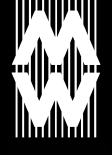![]()
![]()
![]()
![]()
![]()
![]()
![]()
![]()
![]()
![]()
![]()
![]()
![]()
Archives & Museum Informatics
158 Lee Avenue
Toronoto, Ontario
M4E 2P3 Canada
info @ archimuse.com
www.archimuse.com
| |
Search |
Join
our Mailing List.
Privacy.
published: April, 2002

The Royal Danish Kunstkammer
Tine Wanning, National Museum of Denmark, Denmark
http://www.natmus.dk
Demonstration: Demonstrations 1
The objects from the royal Danish Kunstkammer which was established around 1650, has for almost 175 years been dispersed in several specialised museums. The web is an ideal media for the reconstruction of such a fragmented collection. In this virtual Kunstkammer, about 250 artefacts are presented in images and text.
The overall aim of this project is threefold:
1.To reunite parts of the original Kunstkammer
2.To give he visitor the possibility to create his own exhibition (be your own curator)
3.To tell the story about the renaissance collections
1. A virtual visit in the Kunstkammer
The Kunstkammer was set up in 9 rooms in the royal castle in Copenhagen e.g.:
First Apartment with natural history specimens.
Second Apartment with artefacts in gold, silver and ivory as well as paintings.
East-Indian Chamber, which displayed ethnographica from the overseas.
The Antechamber with a collection of impressive Brazilian paintings
A main principle of the system has been to preserve the original categorisation in 9 different chambers, thus showing the way knowledge and information was organised and systematised in a renaissance collection. A visitor in the virtual exhibition must therefore choose a room to visit to see the objects in the original context.
2. Your own exhibition
The Kunstkammer artefacts are in themselves interesting enough by their beauty, fine craft and historic value, and the virtual Kunstkammer could be justified alone by presenting the fascinating objects. However, a strong goal of the system was also to introduce the concept of collecting and organising by interactive means. Since 1998, The National Museum has housed a very popular exhibition called “The King’s Kunstkammer and your own”, where the children can build up their own exhibitions in museum showcases.
We wanted to do something similar in an electronic way. In the “Make your own exhibition” feature, the user can build up exhibitions with artefacts from the Kunstkammer collection in a virtual museum. This virtual museum is an isometric model containing storage, exhibition rooms and entrance hall.
In the storage the objects are placed in boxes and sorted after more or less logical criteria.
The organising of the world is dependent on the eyes that see, influenced by the predominating scientific and philosophical comprehensions of the time. To illustrate that, we have organised the artefacts in an untraditional way (from a modern museum’s point of view) e.g. things with feather, wooden things, paintings, shiny things, round things etc. in the boxes. Obviously one artefact can be stored in several boxes – the true benefit of virtual collections!
The user, as a small computer animated figure investigates the storage, where he can collect objects for the exhibition. Having done the selection he walks to the exhibition area, chooses a room and places the artefacts in the showcases. Finally he can attach title and description to this personal exhibition, which will be accessible for the next visitors.
3. The chapter on renaissance collections
is an encyclopaedic hypertext about Kunstkammers and Natural Cabinets.
